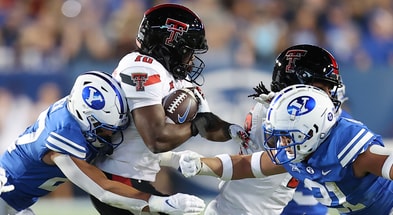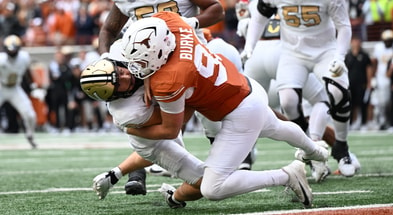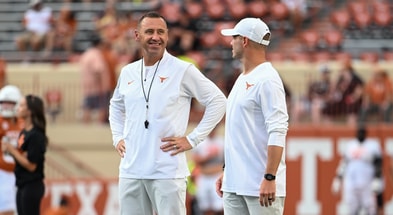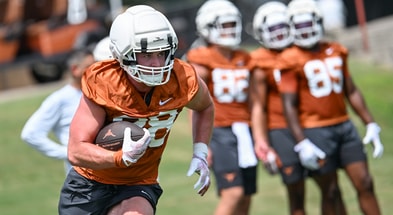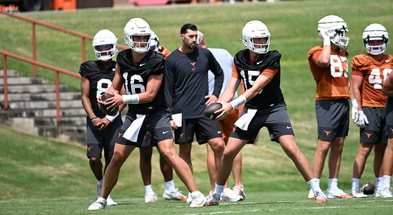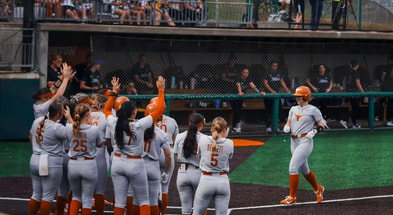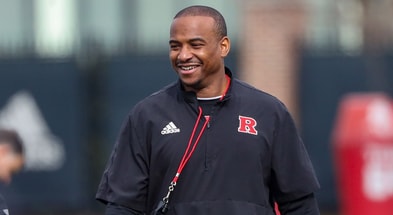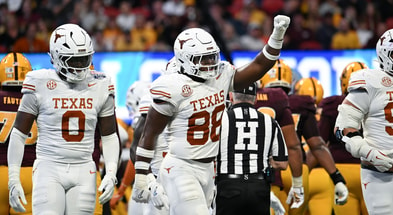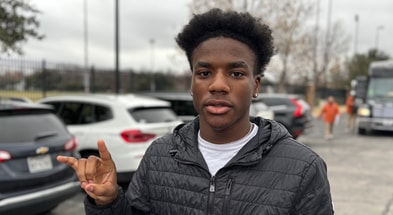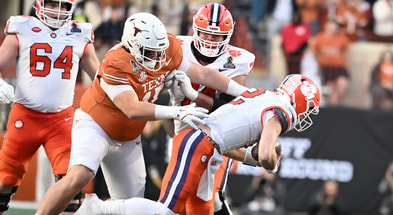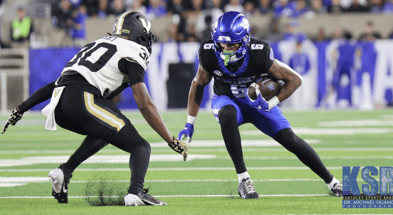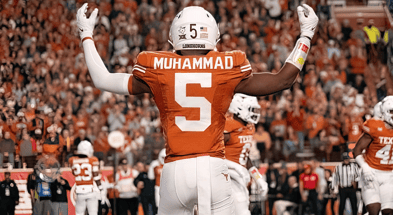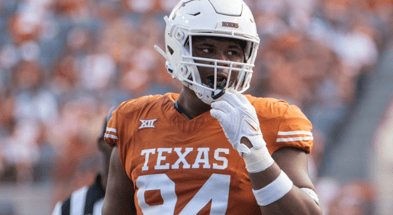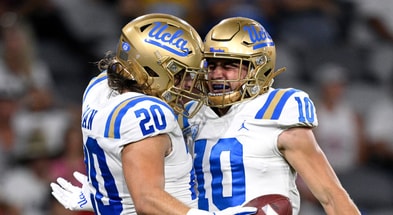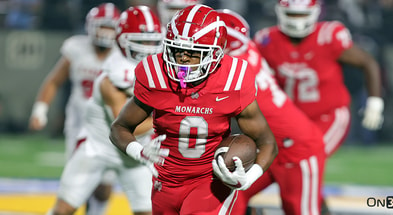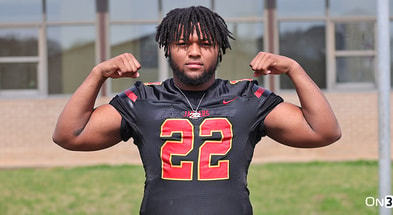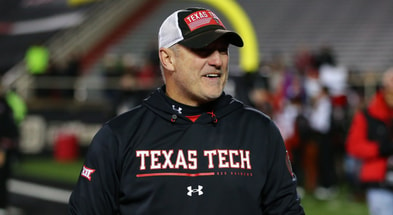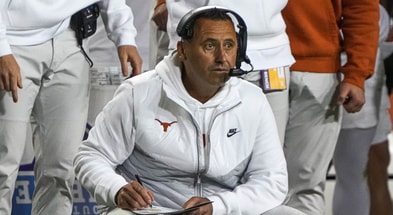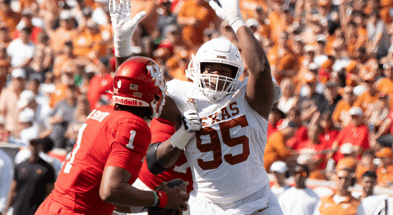Inside the gameplan: Go-Go in 2022?

Texas’ new wide receivers coach Brennan Marion is pretty famous in the coaching world. While he is a well respected recruiter and was an effective position coach at Pitt last season for a team that went 11-3 and boasted the Biletnikoff winner for best wide receiver in the nation, he was previously famous for another reason.
Marion is the architect of the “Go-Go offense,” a quirky and modern offensive scheme which achieves the result of utilizing two running backs at the same time.
Here’s the Go-Go:
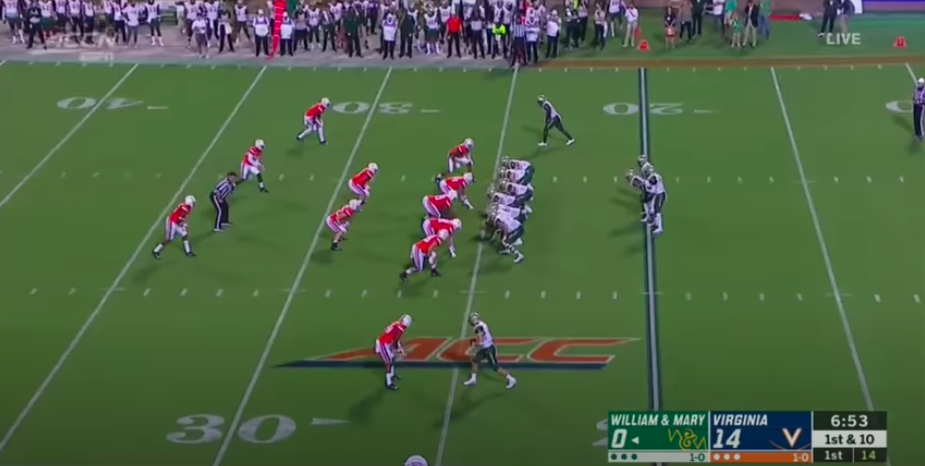
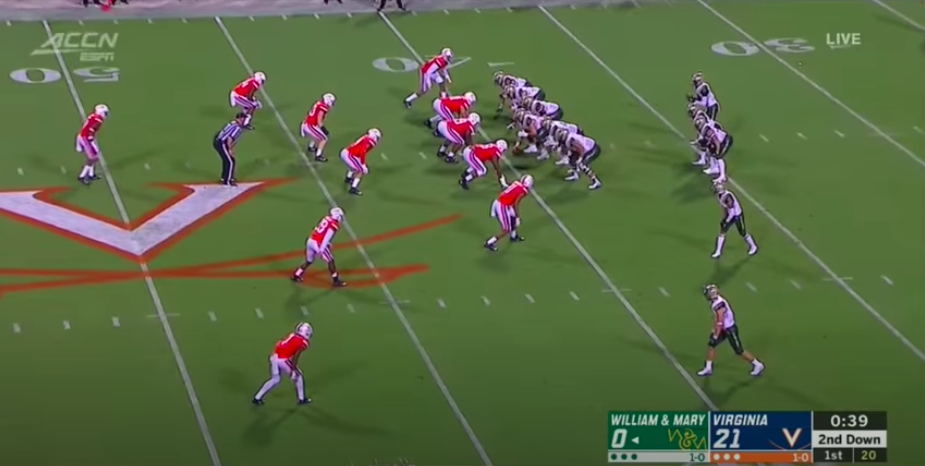

The Go-Go offense
So what is this, exactly?
There’s triple-option, play-action passing, RPOs, tempo, unbalanced formations but ultimately it’s actually nothing wild. Marion invented a new way to line up a similar cast of skill talents as you’d see from a typical football squad to run some familiar schemes.
Indeed part of what made the offense so effective for Marion at previous stops before he started working below the level of coordinator at Power 5 schools (Hawaii, Pitt, now Texas) is the simple fact he could line up in unique and unbalanced formations defenses weren’t used to facing.
Here’s the play GIF’d above…
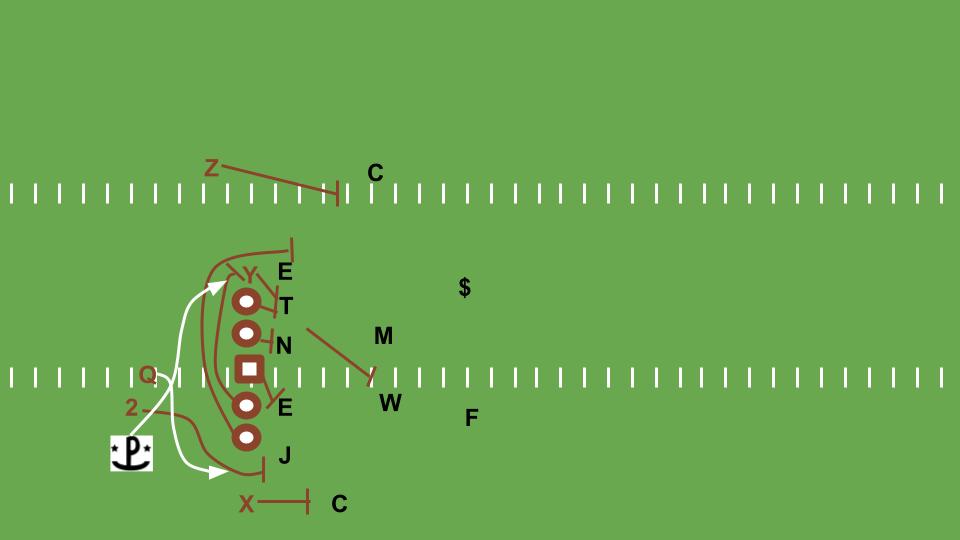
…when you can look at it drawn up, slowly, it’s pretty normal and not really so wildly different from say, Tom Herman’s offense.
It’s GT counter-read with an arc block for the quarterback keeper if the unblocked defensive end crashes. The end doesn’t crash, so the quarterback hands off to the running back to follow the pulling linemen.
William and Mary often used a fullback as one of the two running backs, further blurring the lines between a normal offensive set and the Go-Go. They could also use a traditional running back but if one of those guys is going to be blocking more than the other, might as well be a fullback.
The biggest difference between this and a normal set with an H-back and running back is how wide the other running back (illustrated as Bijan Robinson here) is aligned. He comes a little further to receive the mesh from the quarterback, which can help buy time for option reads on either quarterback keepers OR RPOs.
The other big difference from these Go-Go formations is how defenses relate to them. In the example above, by defensive assignment rules Bijan Robinson would count like a slot receiver or a tight end while the fullback (illustrated here as Roschon Johnson) would count as the running back for the defense as they determine their keys and “who’s got who?”
You can get some cross-matches and confusion by lining up this way. Marion is a big believer in tempo as well, when you combine these unorthodox formations, option schemes, and play-action with tempo you can end up with people running free when defenses blow assignments.
At the end of the day this is pretty similar to Gus Malzahn’s system, which Marion played in at Tulsa back in 2007 and 2008. Like with Malzahn, there’s an awful lot of Wing-T in there but ultimately the name of the game is using the option to bolster a traditional “two-back power run game and then play-action over their heads” approach.
Go fast, do it in a novel way, and run option and you’ll make it easier to set up play-action tosses to wide open receivers.
They didn’t even do this at Pitt last year though. They threw the ball a ton from 11 personnel with quarterback Kenny Pickett attempting 497 passes (4,319 yards, 8.7 ypa, 42 touchdowns, seven interceptions) and completing 100 of them to Marion’s charge Jordan Addison (1,593 yards, 17 touchdowns).
The Go-Go at Texas?
Steve Sarkisian isn’t going to overhaul his offense to reflect a scheme his new position coach last ran for a 5-7 William and Mary squad in 2019. However, it’s notable he hired a coach with a full-fledged offensive system designed to utilize multiple running backs given the personnel of the 2022 Texas Longhorns.
Texas has four running backs on the roster who looked good in 2021 between Bijan Robinson, Roschon Johnson, Keilan Robinson, and Jonathon Brooks. When Bijan went down with injury and Roschon carried the Longhorns to victory against K-State with 31 rushes for 179 yards at 5.8 ypc it was clear Texas had a bit of a problem on their hands. How to find work and carries for all of these productive players packed in at the same position?
Texas did have a two-back set they mixed in with a few different schemes, many (necessarily) employing the shotgun option game. It was a limited part of the arsenal though and they focused on using 11 and 12 personnel sets designed to feature Bijan in a more traditional run game without a lot of option elements.
The question for all schemes with two running backs is what the guy without the ball is doing. On a running play he either he needs to be blocking or the offense needs to be running an option scheme, which means the quarterback has to be involved as a runner. Marion did some of each, Sark has traditionally been less excited about the latter because it exposes his carefully-trained passers to hits.
Running the Go-Go offense at all requires a certain level of commitment. You need to have a system for communicating the formations and plays into the existing offense, practice the wide alignment for the second running back with the accompanying mesh angles for the quarterback hand-off, and then you need enough to keep defenses from recognizing tendencies and teeing off on the package.
It makes sense why Pitt didn’t really mess with it, but Texas could be different because of their personnel.
Roschon is likely to get carries as a back-up running back as well as in the Wildcat scheme they’ve already installed and had a lot of success in. Wild RoJo was a system which already made use of having multiple running backs on the field at the same time… it just didn’t make much of the quarterback or wide receivers (i.e. Xavier Worthy).
Top 10
- 1New
Lincoln Riley
Addresses USC split rumors
- 2Trending
How to watch ESPN/ABC
If you're a YouTube TV customer
- 3Hot
Best Bets
Josh Pate's 11 best bets
- 4
YouTube TV
Puts ESPN, Disney on blast
- 5
College GameDay
McAfee reveals way to watch
Get the Daily On3 Newsletter in your inbox every morning
By clicking "Subscribe to Newsletter", I agree to On3's Privacy Notice, Terms, and use of my personal information described therein.
It’ll be hard to make the most of Roschon without adjustments though, and forget about maximizing Keilan Robinson or Jonathon Brooks, to say nothing of Jaydon Blue.
So can the Go-Go be incorporated into Sark’s existing offense as a package to be mixed in? Could it see emphasis comparable to what Texas put on 11 or 12 personnel in 2021?
There’s a few easy criterion for gauging whether Texas would want to install this system as a way to emphasize the running back room.
Would this reflect Texas’ best personnel?
This question is really easy. Most teams’ back-up running back is probably a better football player than many of their starters, it’s the nature of the position. Texas is uniquely stacked though with a homerun threat in Keilan Robinson, a proven power back in Johnson, and a promising up and comer in Brooks all sitting behind one of the best players in the whole nation.
Would playing with two running backs come at a great cost in benching a tight end or wide receiver?
Not particularly, no. Texas is in the market for another wide receiver who could deepen the room, but playing with only two receivers at a time is already baked into the Longhorn system because of how much 12 personnel they used. As it happens, both of the tight ends from the 12 personnel set are now moving on. Sure they have three more behind them, but are any of them essential? Do they need to see the field regularly over a Roschon Johnson? Only if the scheme makes more of their role.
Are the running backs versatile enough to make it work?
For the most part, yes. Bijan Robinson can literally do anything and has already demonstrated prowess as a blocker and receiver. Roschon Johnson is unsurprisingly willing as a blocker. Keilan was a tad more limited a year ago and Brooks is still developing, Jaydon Blue could probably move to wide receiver if he wanted to do so.
Texas already answered this question with their split-back package from 2021 which would use one back as a blocker or receiver while the other was an inside run threat.
Can the quarterbacks handle some option responsibilities?
They definitely could. If anything, Hudson Card might be more comfortable in a system which asks him to run around in the option game from time to time. Quinn Ewers has the size and speed to do it and was involved in running zone-option at Southlake Carroll with 568 rushing yards and nine rushing touchdowns as a sophomore. He’s now 6-foot-3, 215 pounds with legitimate 4.6 speed.
Texas doesn’t want to run the quarterback much, but within a package they could probably get away with mixing in quarterback keeper reads and even design them in such a way the quarterback would rarely need to follow through.
Does the Go-Go bolster what Texas is already doing?
Perhaps Texas could add some or substantial amounts of Go-Go offense to the playbook, but will it be an obvious adventure into something different? Or could it actually blend with what Texas is already doing?
I think the answer is actually the latter, the Go-Go could definitely fit with what Texas is already doing. Here’s an example on one of Sark’s main RPO concepts.
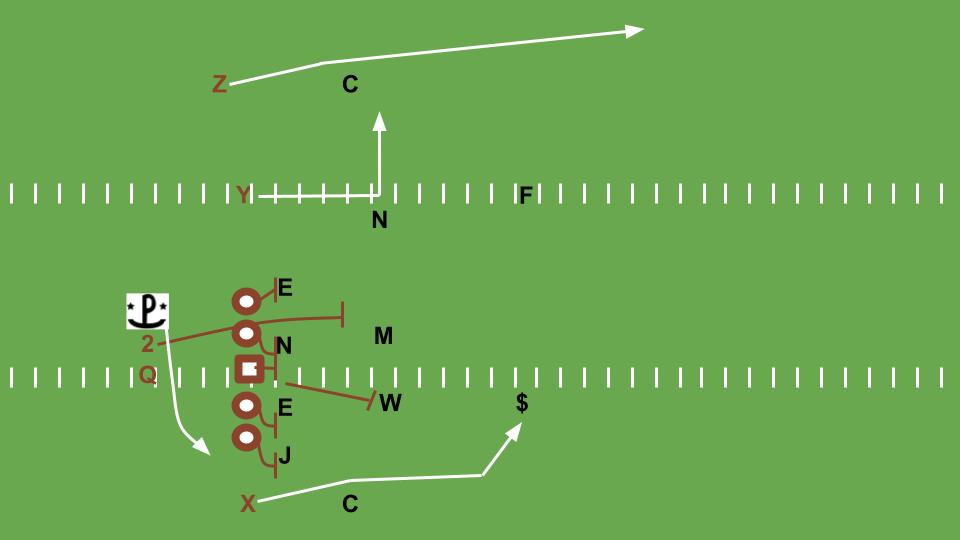
This is outside zone but it could also be Iso or counter. Roschon leads into the cutback and the quarterback holds the mesh for a long time which puts a lot of pressure on the nickel who has to cover the Y stick route on the hash mark. Someone has to fit the gap created by the Roschon block and there are pass options in place to punish either the nickel or free safety for doing so.
As with an 11 personnel set, the goal is to force the defense to commit extra defenders aggressively against the run game. Then you can toss it past them on RPOs or over their heads on play-action.
With the quarterbacks on the roster now, Texas can attack teams outside and down the field regularly, so the main choice up front is simply how best to package the personnel in order to run the ball. The Go-Go offense could allow Texas to make better use of their running backs in this task, so don’t be shocked if it supplements the existing 20 personnel sets in 2022.
